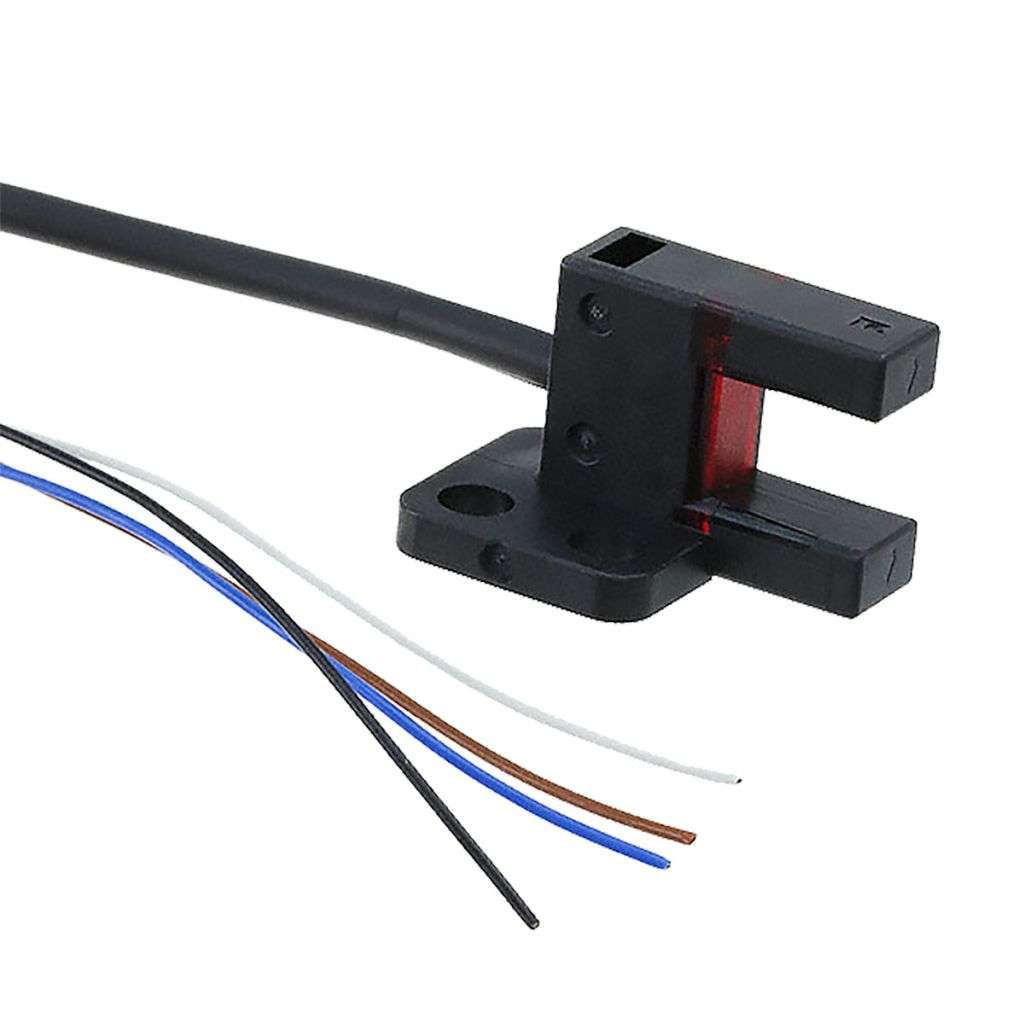
Fork Sensors
Fork sensors are specialized optical sensors designed to detect small objects, edges, or labels with high precision. These sensors consist of a U-shaped housing, with an emitter on one side and a receiver on the other, creating a detection zone between the two. When an object passes through the fork’s gap, it interrupts the light beam, allowing the sensor to detect its presence or absence. Fork sensors are commonly used in packaging, labeling, and material handling industries due to their accuracy and compact design.
One of the main advantages of fork sensors is their easy alignment and stability. Since the emitter and receiver are built into a single housing, there is no need for manual alignment, making installation straightforward and reducing the risk of misalignment over time. Additionally, their small size allows them to be installed in tight spaces, making them ideal for applications with limited room.
Fork sensors excel in detecting transparent, thin, or reflective objects, which can be challenging for traditional sensors. For example, they are widely used in label detection, ensuring that labels are correctly placed on bottles or packages. Their fast response time and high sensitivity allow them to detect even the smallest gaps between labels, ensuring accurate placement in high-speed production lines.
These sensors can also be used in counting applications, where precise detection of small parts is required. They are capable of handling rapid processes, such as counting individual items in an assembly line or detecting the edge of materials in cutting machines.
In conclusion, fork sensors offer reliable, precise detection in industrial applications where accuracy and speed are essential. Their compact design, ease of use, and ability to detect difficult-to-sense objects make them a valuable tool in automation systems, contributing to enhanced efficiency and reduced downtime in various industries.
